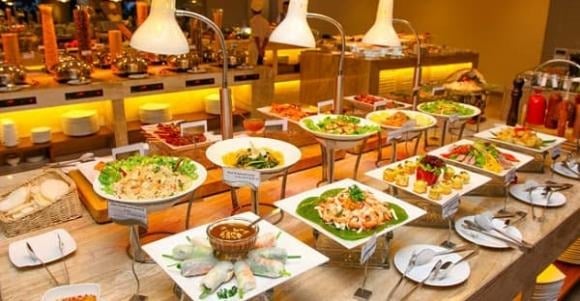Economies of Scale
Restaurants can reduce costs by purchasing ingredients in bulk, thus lowering the per-guest price. Additionally, once ingredients are purchased, most costs are fixed and do not vary with the number of guests. So, by serving more guests, the cost per person decreases.

Bulk purchasing leads to cost savings for restaurants.
Enhanced Table Turnover
By offering an attractive buffet option, restaurants can attract more guests and improve table turnover (the number of guests served per day). Higher table turnover means increased revenue within a given time frame.
Diverse Food Choices
The abundance of dishes at a buffet allows guests to select their preferred options. This diversity not only enhances customer satisfaction but also increases the likelihood of repeat visits.

Buffets offer a wide range of food choices to suit different tastes.
Minimizing Food Waste
Buffet-style dining lets guests choose their food according to their preferences, reducing food waste. Most restaurants aim to minimize waste, which also helps keep their costs down.
In summary, buffets are more cost-effective because they enable restaurants to achieve economies of scale, increase revenue per table, offer diverse food choices, and reduce food waste.






























